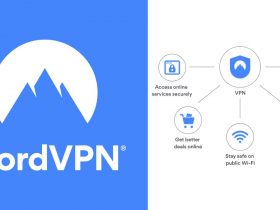Blockchain is a distributed ledger technology and a latest technology trends that securely, openly, and practically tamper-proof records transactions across numerous computers. It is made up of a series of blocks connected by cryptography, each of which contains a list of transactions. This decentralized, irreversible ledger has many ramifications and uses in several industries.
A brief history
In 1982, cryptographer David Chaum first suggested a blockchain-like system in his dissertation. Stuart Haber and Scott Stornetta provided additional work on a chain of blocks that was cryptographically secured in 1991. They sought to implement a mechanism that would prevent tampering with document timestamps.
Satoshi Nakamoto created the initial decentralized blockchain concept in 2008. He then enhanced the architecture by timestamping blocks without requiring them to be signed by a third party. The invention was implemented the following year as a fundamental part of the cryptocurrency Bitcoin, which functions as the network’s central public record for all transactions.
Blockchain is useful in genomics for securing sensitive data and enabling transparent, auditable, and controlled data sharing, ensuring data integrity and privacy in genomic research. It also allows individuals to retain ownership and control over their genetic information while facilitating secure collaboration among researchers and institutions.
How does Blockchain Technology work?
Blockchain relies on a network of computers, often known as nodes, rather than a centralized authority like a bank. These nodes verify and keep track of transactions. The network’s nodes validate the transaction. A copy of the whole blockchain ledger is stored on each node. They ensure the transaction is legitimate, which means it satisfies the requirements and isn’t used twice.
Also Read: Best Programming Languages To Learn In 2024
Blockchain also has a huge applicability in quantum computing. Blockchain can enhance quantum computing by providing secure and tamper-resistant records of quantum computing results, ensuring data integrity and trust in quantum systems. It can also enable distributed consensus algorithms, which are critical for managing and validating transactions in a quantum blockchain network.
Finance and Blockchain
Bitcoin and Ethereum are the two most well-known cryptocurrencies where blockchain technology is implemented. Transactions are safe and transparent because of blockchain, which eliminates the need for middlemen like banks.
Self-executing smart contracts can be created using blockchain technology. These contracts can be automatically enforced, verified, or helped to be negotiated. This could completely change the way of legal and financial interactions.
Supply Chain with Blockchain
Blockchain is being used by businesses to track the provenance and travel of products along the supply chain. This promotes authenticity and openness, aids in quality control, and lowers fraud. Blockchain improves efficiency by decreasing paperwork, giving real-time visibility into the flow of commodities, and streamlining supply chain operations.
Also Read: Best VR Games For Android That Are A Must Try
Health Care Using Blockchain
Patients’ health records can be managed and stored securely and privately using blockchain technology. Patients’ ability to manage access to their data enhances privacy and security.
Pharmaceutical companies can utilize blockchain to track the manufacturing and distribution of drugs, which will help to cut down on the sale of fake medications.
Real estate and blockchain
Using blockchain to store and maintain property records can increase accuracy and lower the risk of fraud in real estate transactions. Real estate asset tokenization makes investing in this market more feasible by enabling fractional ownership and exchange of real estate assets.
Challenges to overcome
A blockchain becomes less effective as more transactions are added to it. Scaling solutions are required to handle more transactions, especially for public blockchains. Interoperability issues arise when various blockchains frequently run independently of one another. It is difficult to develop standards and protocols for cross-blockchain compatibility and communication. For non-technical users, blockchain apps might be daunting and difficult. Mass adoption requires enhancing user interfaces and making apps more approachable.



























Leave a Reply